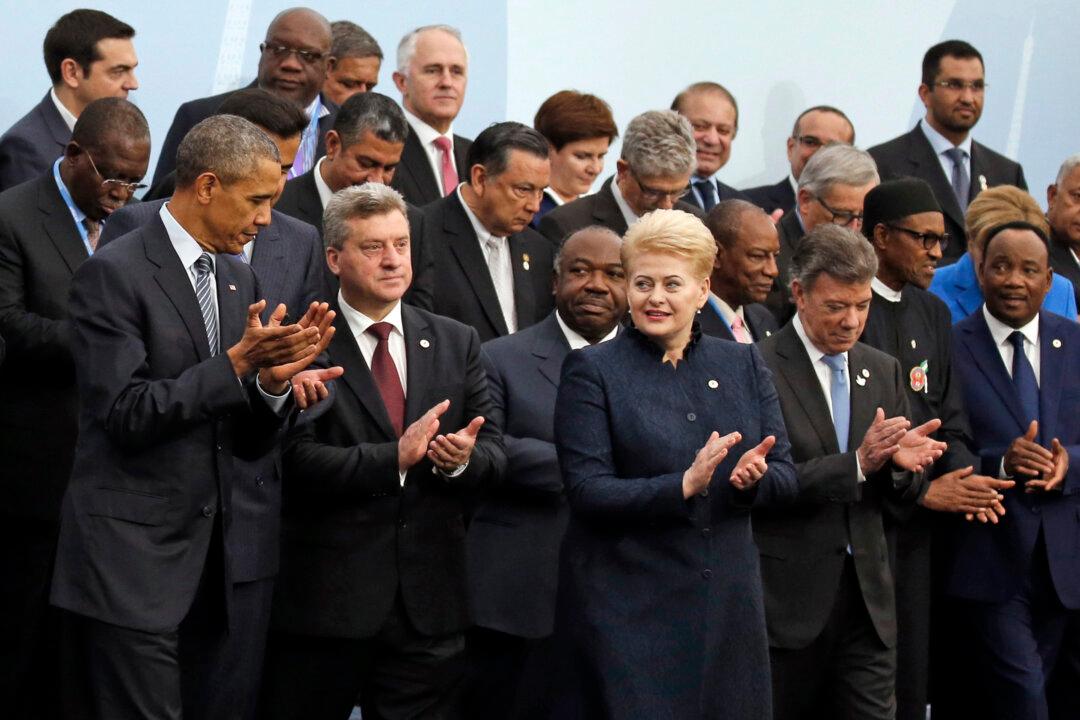LE BOURGET, France—With dramatic vows to save future generations from an overheated planet, the largest gathering ever of world leaders began two weeks of talks on Nov. 30, aimed at producing the most far-reaching pact yet to reduce greenhouse-gas emissions and avert environmental havoc.
“We should ask what will we say to our grandchildren if we fail,” British Prime Minister David Cameron said as the U.N. climate summit opened under heavy security on the outskirts of Paris, two weeks after the extremist attacks that left 130 people dead. “Instead of making excuses tomorrow, let’s take action today.”
Even before the gathering, more than 180 countries pledged to cut or curb their emissions, but scientific analyses show that much bigger reductions would be needed to limit man-made warming of the Earth to 2 degrees Centigrade (3.8 degrees Fahrenheit) over pre-industrial times, the internationally agreed-upon goal.
The biggest issue facing the 151 heads of state and government at the summit is who should bear most of the burden of closing that gap: wealthy Western nations that have polluted the most historically, or developing countries like China and India that are now the biggest and third-biggest emitters of greenhouse gases?
The last major climate agreement, the 1997 Kyoto Protocol, required only rich countries to cut emissions, and the United States never signed on. Since then, global temperatures and sea levels have continued to rise, and the Earth has seen an extraordinary run of extreme weather, including severe droughts and storms.





